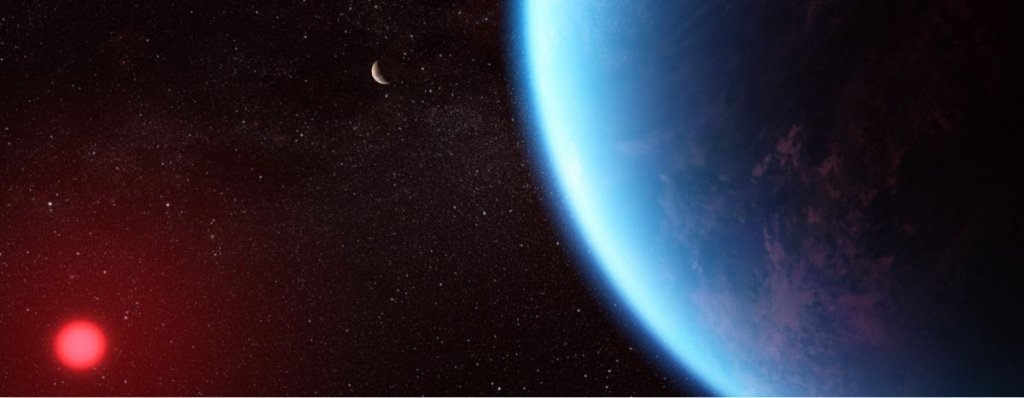James Webb Makes Carbon Discovery

Scientists are often tasked with finding new ways to store, mitigate, or altogether reduce carbon in the atmosphere. But there’s a certain type of researcher that can’t get enough of those greenhouse gases: behold the Astronomer.
What happened: Using the James Webb Space Telescope (JWST), a team of researchers have discovered carbon-based molecules in the atmosphere of exoplanet K2-18 b – a planet that orbits in the habitable zone of red dwarf star about 120 light years from Earth.
The team, led by University of Cambridge scientist Nikku Madhusudhan, found high levels of methane and carbon dioxide, and a scarcity of ammonia in the atmosphere. This suggests that the planet could be the first recorded hycean exoplanet.
- Scientists have long speculated about the possibility of a hycean (hydrogen + ocean) planet consisting of an oceanic surface and a hydrogen-rich atmosphere. The big kicker: it may be suitable to support life.
Life on Mars K2-18 b?
Recall from Ms. Frizzle, carbon is one of the key building blocks of life as we know it. So, does the recent observations of K2-18 b suggest the discovery of extraterrestrial life? It’s in the works.
- On top of detecting carbon-based molecules, researchers also hinted at the discovery of dimethyl sulfide (DMS) – a molecule that is only produced on Earth by living organisms, primarily phytoplankton.
For now, the DMS observation is much less certain than the detection of the carbon-based molecules.
What’s next for Jimmy Dubs: Madhusudhan et al. will be conducting further observations using other instruments abord the JWST to try and confirm the presence of DMS and other signatures of life in K2-18b’s atmosphere.
Of course, discovering life elsewhere in our galaxy would arguably be the G.O.A.T. when it comes to scientific discoveries, but the consolation prize of confirming a long hypothesized hycean world would be a significant landmark in our understanding of the universe as well.




